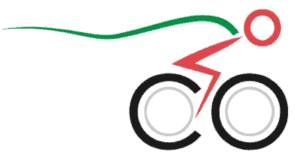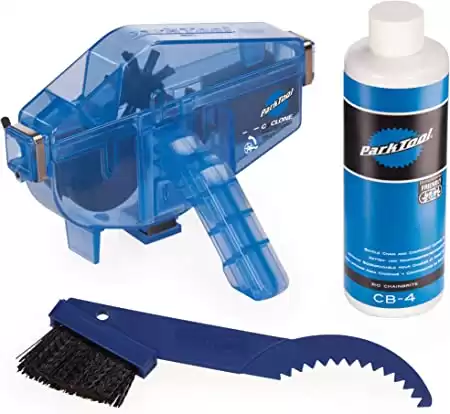I got on my bike after cleaning last weekend and could barely get the pedals to turn. It turned out that I didn’t install the wheel correctly, and the brake pads were touching the disc. This got me thinking that some small mistakes can make pedaling harder.
A bike is hard to pedal because its brakes rub against the rim or disc, and the chain is not lubed. It may be in the incorrect gear for the terrain; the tire might be too wide and threaded. Insufficient pressure or an out-of-true wheel can also cause unnecessary friction and result in a difficult ride.
To fix the issue, small tweaks and adjustments can go a long way. Let’s see how you can identify what causes your bike to be too hard to pedal and what you can do to make it easier.
Brake pads
Brake pads touching the rim of your wheel or the brake disc can also make it hard for you to pedal your bike. This can happen both at the front and the rear wheel.
Electric bikes built for everything and priced for everyone. Shop Rad Power Bikes, America's #1 electric bike brand. Get out. Go further. Ride Rad.To find out if this may be the case, lift the wheel and spin it with your hand. If it spins without problems, then all is good. If you find it hard to turn the wheel, it’s a sign that the brake pads are touching the rim or the disc, and they need adjusting.
Loosen the cable tension until the wheel spins freely if you have rim brakes or mechanical disc brakes. Depending on what type of bolts your bike uses, you’ll need an Allen key or a small-size spanner. Once the bolts are loosened, you can adjust the cable tension and tighten the bolts again.
On hydraulic disc brakes, you need to remove the wheel and physically push back the brake pads.
If you don’t feel comfortable removing the wheel, you can take your bike to your local bike shop.
Tire rub
The tire rubbing against the frame or the bike’s fenders can also cause unnecessary friction. Such a rub makes an audible noise most of the time, but it can go unnoticed sometimes. Slick tires can rub without being noticed.

Check your tires and see if there is sufficient clearance on the front and the rear. Mud can also cause friction if you don’t clean your bike after a muddy ride.
Replace the tires with narrower ones if there is insufficient clearance.
Also, check if your wheel is centered correctly. Sometimes it can be at an angle, which results in it touching the rim. Loosen the wheel, center it properly, and tighten the bolts again.
Chain needs lubrication
If the chain is rusty or dirty, it can make pedaling your bike hard.

When you see oil, gunk, and mud on your chain, you know it’s time to clean it. If you see rust appear on the chain, you know that it’s soon time to get a new chain. Also, if you can hear a constant squealing noise as you pedal, that might be another sign that it needs lubrication.
Your chain requires regular maintenance (cleaning and lubrication) since it is exposed to the elements. Your bike gets harder to pedal over time if you neglect your chain.
To clean your chain, you need a chain-cleaning tool and some
This chain lube is an ultra durable, low friction bike chain lubricant suitable for use in all weather conditions.
This Park Tool kit includes everything you need to keep every bit of your chain clean.
Tire pressure
Low tire pressure can also make pedaling harder. A tire with insufficient pressure turns without problems, but there is too much rolling resistance when riding.
If the pressure is too low, the tire bulges where it meets the road and increases the friction. You feel that you lose speed too fast when rolling on a flat.
It’s quite normal for bicycle tires to lose air over time, and fixing it is as simple as topping up your tire with air. The pressure you should inflate your tire to varies from tire to tire. Check the recommended tire pressure indicated on the sidewall of your tire. A pump with a gauge will help you achieve ideal pressure for the ride.
I like inflating mine to the maximum recommended pressure because it gives the best rolling performance.
Out-of-true wheel
An out-of-true wheel spins in a pattern that describes an 8 when looked at from behind. A wheel with a broken spoke can cause the same problem. In certain cases, you can also feel this while riding your bike: the bike shakes. If your bicycle has rim brakes, an out-of-true wheel can touch the brake pads, which makes it hard for you to pedal.
If you spin the wheels with your hands and the wheel stops before it can turn around completely one full revolution, the brake pad touches the rim at a certain point.
To fix an out-of-true wheel, you must adjust the spoke tension with a spoke key. In some cases, the spokes or even the entire rim has to be replaced. If you’re new to cycling, this job is best left to the mechanic of your local bike shop.
Wrong gear
New riders often want to avoid changing gears and ride the bike in the same gear as when they bought it. If you want to go uphill or even on a flat road with some extra load, riding in high gear results in a difficult ride.
The gears on the bicycle are meant to optimize the effort and speed for the terrain you’re riding on, your weight, and your fitness level.
When you put your bike in low gear, it’s easy to pedal, but you can’t go too fast because it takes too many crank turns to get up to speed. The low gears on your bike are meant for riding uphills or if you ride with heavy loads.
When you put your pedal in high gear, it’s hard to pedal, but in return, you can go faster when you ride on a flat or a descent.
You can read my article on shifting gears here
First, check the gear it’s in. These conditions make riding a bike in high gear much harder.
- Riding uphill
- Carrying extra weight (a fully loaded pannier or a child in a child seat)
- Towing a trailer
Use your shifters to change to a lower gear, which makes pedaling easier. Once you’re up to a certain speed or the terrain becomes more favorable, you can change to a higher gear.
Rusty or dirty gear set and drive train
If you ride your bike in a particularly muddy and wet area, your drivetrain and derailleur will get dirty and rusty. Dirt and rust on the gear set and derailleur will also increase friction and make pedaling hard.
First, clean the cassette and each part of the gear set and make sure that it is still in good shape. If you notice on the cassette that the cogs are worn out and rusty, you may need to change that too. An excellent way to determine whether the cassette needs replacement is to check the chain.
You can read the article I wrote on this topic
Loose or worn-out cables
Loose cables or worn-out cables can cause imprecise shifting. This is very common for a bike that hasn’t been tuned up for a long time.
Cables come loose, and shifting becomes imprecise or even impossible over time. Your bike might get stuck in one gear, so you can not change gears at all. Having only limited gears or only one available can make pedaling much harder.
Adjust your cables using the barrel adjuster on the cable for fine-tuning, or adjust the cable on the derailleur side to make big adjustments.
Misalinged derailleur
A misaligned derailleur also results in poor shifting and makes pedaling hard.
To determine whether this is the case, visually check if your derailleur hanger is straight. It should run in a straight line.
Also, the derailleur has two limit screws that allow you to finetune how far the chain can shift up and down. These need to be adjusted properly if you can’t shift all the way up and down.
Read my article on how to adjust cables and derailleur
Bottom bracket
The bottom bracket connects the groupset to the frame, allowing the pedals to rotate independently.
An improperly installed or sealed bottom bracket results in the pedals turning hard. Check your bottom bracket if you hear a strange grinding, clicking, or creaking noise, or you can move your cranks sideways.
Fixing the bottom bracket requires some special tools and experience, so it’s best left to your mechanic in the bike shop.
Saddle height
Especially having the saddle too low can cause a lot of strain on your muscles as your legs don’t have enough room for the proper position. Sitting in a position that hinders you from applying the necessary force will make pedaling much harder.
To set up the saddle properly, you should put your pedal to the bottom (furthest from the saddle) and place your foot on the down pedal in the normal position you use when riding. Your leg should be almost straight, with about a 5-degree bend, but not fully straight.
This is the sweet spot where you need to set your saddle.
Read the article I wrote on this topic
You can do this
If your bike is too hard to pedal, there’s no need to panic. More often than you think, the solution is as simple as inflating the tire, lubing the chain, or adjusting the cable tension.
If fixing the problem seems too big a task for you to take on, you can always take your bike to your local bike shop.
Happy pedaling!
My favorite bike commuting products
Here are some of the products I love using for bike commuting. They make riding so much more fun and enjoyable.
Ergon GP5 Bar End Grips: These are super comfortable, ergonomic grips that offer me two extra hand positions on my flat bar bicycle. They also offer a much more comfortable grip that helps distribute my weight on the handlebar better.
Bar end mirrors: If you ride much among cars then a bar end mirror can make riding much safer. You don’t have to turn around every single time to check on the traffic coming from behind.
Bike lights from Cateye. This is essential year-round. I recommend going for a more powerful light than just a to-be-seen light. I like the 800-lumen ones from Cateye because they are affordable, portable, and still, give out plenty of light so I can see where I’m going even in pitch dark. The battery lasts for a long time too, and it’s USB rechargeable.
Bike rack. This bike rack from Dirza is great because I can put it on almost any bicycle regardless of whether they have mounting points for racks or not. I can leave it on my bike for commuting or take it off for weekend rides or whenever I don’t need a rack.
If you want to check out my full list of recommended products, you visit my recommended gear page.
Happy pedaling!


